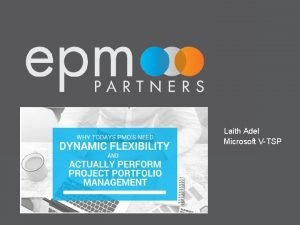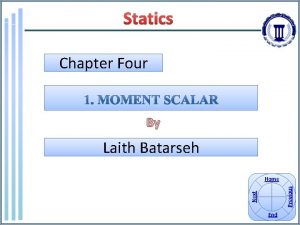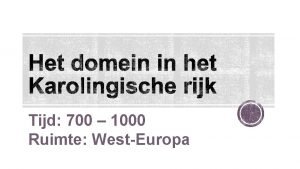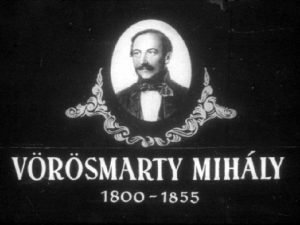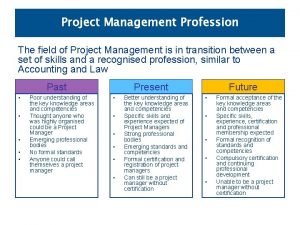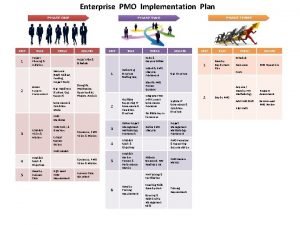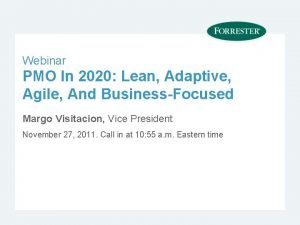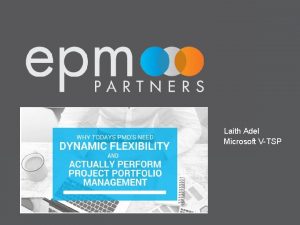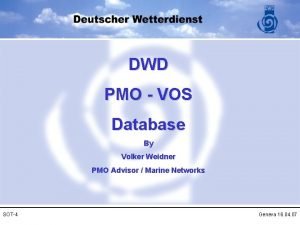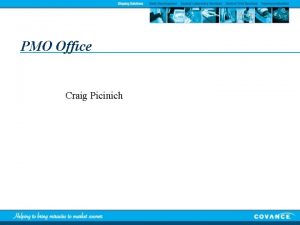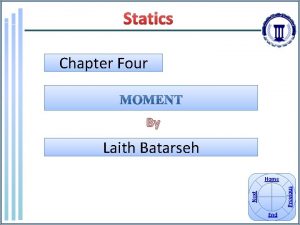Laith Adel Microsoft VTSP Why have a PMO



















- Slides: 19

Laith Adel Microsoft V-TSP

Why have a PMO? § To give the business better visibility and clarity on the projects and/or programmes being delivered § To deliver coordination that is difficult to achieve on an ad hoc project management basis § To ensure governance and improve success rates § To ensure initiatives alignments to the organisation strategic objectives and goals

Types of PMOs

What is the expectation? § Achieving more goals, benefits and objectives that support the businesses changing strategies and tactics, not achieving more projects and programs § Quite often achieving more with less (money and resources) Project Portfolio Management

What is the challenge? § Having portfolios’ objectives and goals (not deliverables) clearly defined, portfolios allocated and budgets clearly specified – This is done on a C-Level (CEO / CFO / COO) or board level, however PMOs need to ask the question very clearly and request/demand for it to happen i. e. tell us; “What do you want to achieve by giving us this budget? ” § Manage and optimise those portfolio(s) to deliver their objectives and benefits within their budgets, this is often considered a mix of art and science

The Problem § Overestimating: Not wanting to be blamed for spending ‘more’ than the estimate (i. e. the budget), in another words, driven by the classical KPI of delivering projects within budget. Which leads to underrunning, i. e. not being able to spend the money or utilise the resources as per the original budget, this can be looked at as a good thing in some – not all – organisations (finishing your project with less money is an ideal situation for many project managers, but is it? § Underestimating: Creates a culture of “use it or lose it”, which defiantly isn’t the fix. Again some – not all – organisations look at spending the money and resources as per budget is a good thing, but is it?

The Traditional Solution § It’s easy: Training, skilling people up in Estimation and having the right tools, to get proper estimation. But is it? § But the fact is even, organisations with high maturity , are still finding that estimation in the “Initiation, Evaluating and even Planning” phases can be a bit or a lot, of what’s eventually required to be spent (even with contingencies), and the accurate estimates (‘ 100% accurate estimation) can only happen in the “Execution” phase.

The Pragmatic Solution 1. Gain the project mangers’ or (BAs) trust to estimate accurately and realistically (i. e. eliminate the phobia of going ‘over budget) 2. Establish a sense of security for the project managers, by making sure that when those project managers need more money and resources to achieve their project objectives, the PMO will be there to make it happen (through a change request process) 3. Implement an going trade off process (REQUEST / RELASE) in projects within a certain portfolio. A project (in flight or closed) that has a “Revised Budget” that is less than its “Original Budget” will RELEASE money and resources to the portfolio and a project (in flight only) that has a “Revised Budget” more than “Original Budget” will REQUEST money and resources. The PMO’s role is not only to facilitate and govern this (RELEASE / REQUEST) process, but he is accountable for keeping the bottom line of the portfolio budget balanced (i. e. no surplus or deficit) in the portfolio budget. See example below:

Balancing the Portfolio – Example

Performance Monitoring § Monitor projects (i. e. Actuals – of money or resources) against the two Budgets (Original and Revised) separately. § Each comparison is measuring different thing. When comparing the ‘Actuals’ vs. ‘Original Budget’ , it’s measuring and monitoring Estimation competency (which is important, to see if investment in enhancing the Estimation competency, through training and/or process and tools is required). § Comparing the ‘Actuals’ vs. ‘Revised Budget’, in this case it’s measuring the performance of the Execution competency (which is not only important to see if Execution area need some enhancements, but to monitor the (RELEASE / REQUEST) process) See sample charts below showing actuals deviation from Original and Revised budgets:

Monitoring Performance - Examples

What if the portfolio has only deficits and no surpluses? § It is underestimating problem (i. e. the estimation competency itself) more than portfolio balancing. So investing in estimation skills, tools , etc could be a solution.

What if the balance is in surplus? § It depends on the frequency of your (REQUEST / RELEASE) cycle, if it frequent (for example monthly), doing nothing for at least a quarter, in case requests are coming. § If there is still a surplus – Return back to the business – Achieve ‘optional objectives’ buy approving more projects.

Microsoft PPM Functions / Microsoft Project Online

Demo

Project Online Trail - Project & Portfolio Management Proof-of-Concept EPM Partners’ PPM Proof-of-Concept (Po. C) is a free-ofcharge package of services that allow you test drive Microsoft Project Online, configured for you. What You’ll Get § A day of an experienced senior PPM consultant’s time that includes a Getting-Started workshop § A fully functioning, cloud-based Microsoft PPM Po. C system, with basic configurations to suit your needs § Up to three user log-ins for 30 days § A system usage guide

Project Online FAQ What does it cost ? How many users can I have ? Nothing, it’s free of charge for 30 days 3 user logins are allowed Is it built on the latest software ? Will it be set-up for me ? Yes, the Po. C is rolled-out on Microsoft Project Online Yes, our consultant will spend a day workshopping your basic requirements and configuring the Po. C for you. What hardware do I need ? Just your laptop and a browser Can I keep it afterwards ? Yes, we’ll set you up as a Project On. Line customer and you can continue to use it. Call 1300 123 376 or email Stuart. Penny@epmpartners. com. au What do I do next ?


 Vtsp charts
Vtsp charts Laith definition
Laith definition Pictures
Pictures Examples of inductive method
Examples of inductive method Hengityskatkokset hereillä
Hengityskatkokset hereillä Adel nadjaran toosi
Adel nadjaran toosi Seiltanz adel karasholi
Seiltanz adel karasholi Dr adel ibrahim
Dr adel ibrahim Adel clerus derde stand
Adel clerus derde stand Flexbility
Flexbility Perczel adél
Perczel adél Which of the following has 6 faces, 8 vertices and 12 edges
Which of the following has 6 faces, 8 vertices and 12 edges Dont ask
Dont ask Kpi in agile
Kpi in agile Pmo roles and responsibilities
Pmo roles and responsibilities Pmo skills and competencies
Pmo skills and competencies Pmo vision statement examples
Pmo vision statement examples How to create a pmo implementation plan
How to create a pmo implementation plan Pmo torre de control
Pmo torre de control Adaptive pmo
Adaptive pmo
